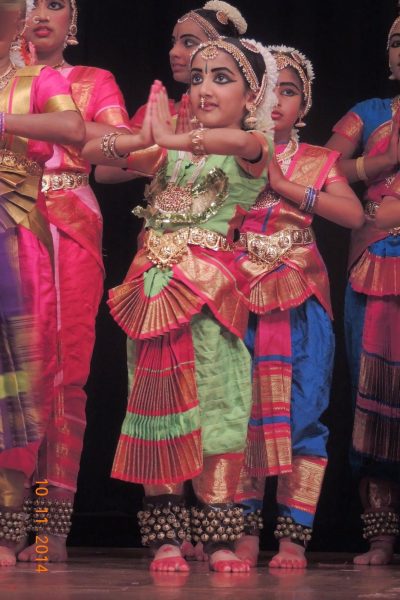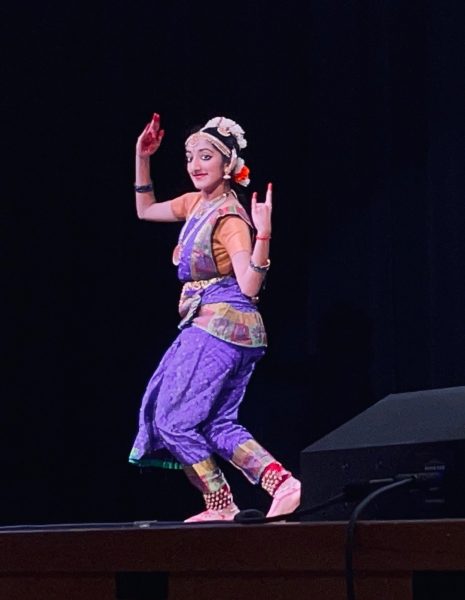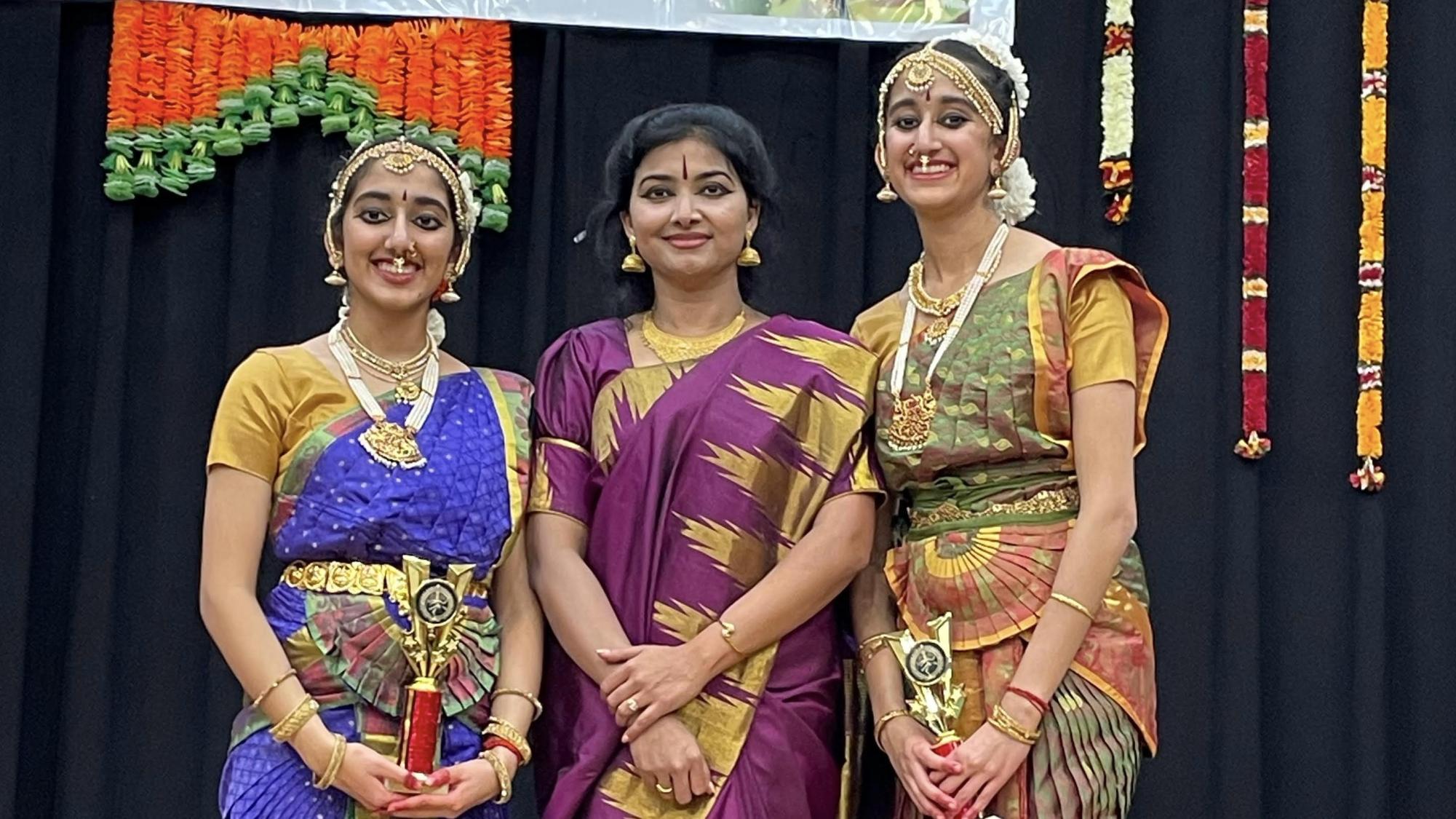Everyone has at least one activity that they enjoy. For some it’s playing the piano. For others it’s reading books. Playing a sport. Video games. Baking. Art. Acting. Singing. The list goes on. There’s always a driving force behind our passion, especially a passion that we’ve been partaking in for many years. While it may not be part of the future you’re pursuing, it’s important to have this part of your life, something familiar that brings you back to who you are, and who you will be for many years to come.
In my case, the activity guiding me back is the ancient Indian classical dance form, Bharatanatyam (bhaa-ruh-tha-NAA-tee-yhum). It was founded in Tamil Nadu, India between 300 BCE and 300 CE, and means dance of India in Tamil, my mother tongue. It was originally performed by devadasis for many decades, temple dance performers who gave up their life to perform. During the reign of the British, Bharatanatyam died down, but many reformers (The Tanjore Quartet, E. Krishna Iyer, Rukmini Devi Arundale, etc) revived the dance form. Today, Bharatanatyam is one of the most popular south Indian dance forms, known for its complicated steps, its use of jathis (rhythmic pattern of syllables) and memorable adavus (basic dance steps), and it’s beautiful dresses.

Although I only went to my first dance class when I was 5 years old, my love for Bharatanatyam grew
before that, somehow a little bit before I can even remember. Yet, there are many videos of me as a toddler, watching my sister practicing her dance steps and awkwardly mimicking them next to her. As the younger sibling, it was natural for me to want to do whatever my older sister did,
but I believe that part of what drew me to the dance was my own personal connection to it as well. I was born in the United States, and even though I have two Indian born parents, my connection with my ethnicity is as distant as it is close. Bharatanatyam, for me, has always been a way to remind myself of where I’ve come from, and grow a connection with India.
My mom, however, had a very different reason for putting my sister and I in those classes, aside from the cultural bridge it would create. “I didn’t want you both just sitting around doing nothing when you were older. I wanted to give you a way to get exercise at any age, and have you enjoy it as well,” she remarked, thinking carefully on the memory. “Also, your father and I both have a connection with music, so you both have always has a love for that as well.”

As I continue to dance for many more years, it’s important to keep in mind all the things that Bharatanatyam has given me. It has provided me with an emotional outlet, precision, music skills, my forever passion, and a permanent connection with the home of my roots. It has given me passion, a respect for hard work, and a drive to learn more.
No matter what you love, no matter how long you’ve been doing it: if it brings you true happiness, make sure to never let it go. We, as humans, are capable of doing many things, but there’s very few things that we can do with a passion behind it as well.


Luxu Hull | Feb 1, 2024 at 11:28 am
ahhhh im so mad that i couldn’t go to the talent show and missed this!!!!!!!!!!!!!!!!! </33333333
Anumitha Vaka | Jan 26, 2024 at 10:17 am
Very well researched and well written article. Love the photos!
Sravya Guda | Jan 23, 2024 at 4:53 pm
I love the article Rathi!
Lorelei Wise | Jan 23, 2024 at 9:57 am
This is a very-well done article! It has a significant message, a story, and I learned new things, which is always important to do. Great job, Rathi!
raksha | Jan 23, 2024 at 9:38 am
SLAY <3